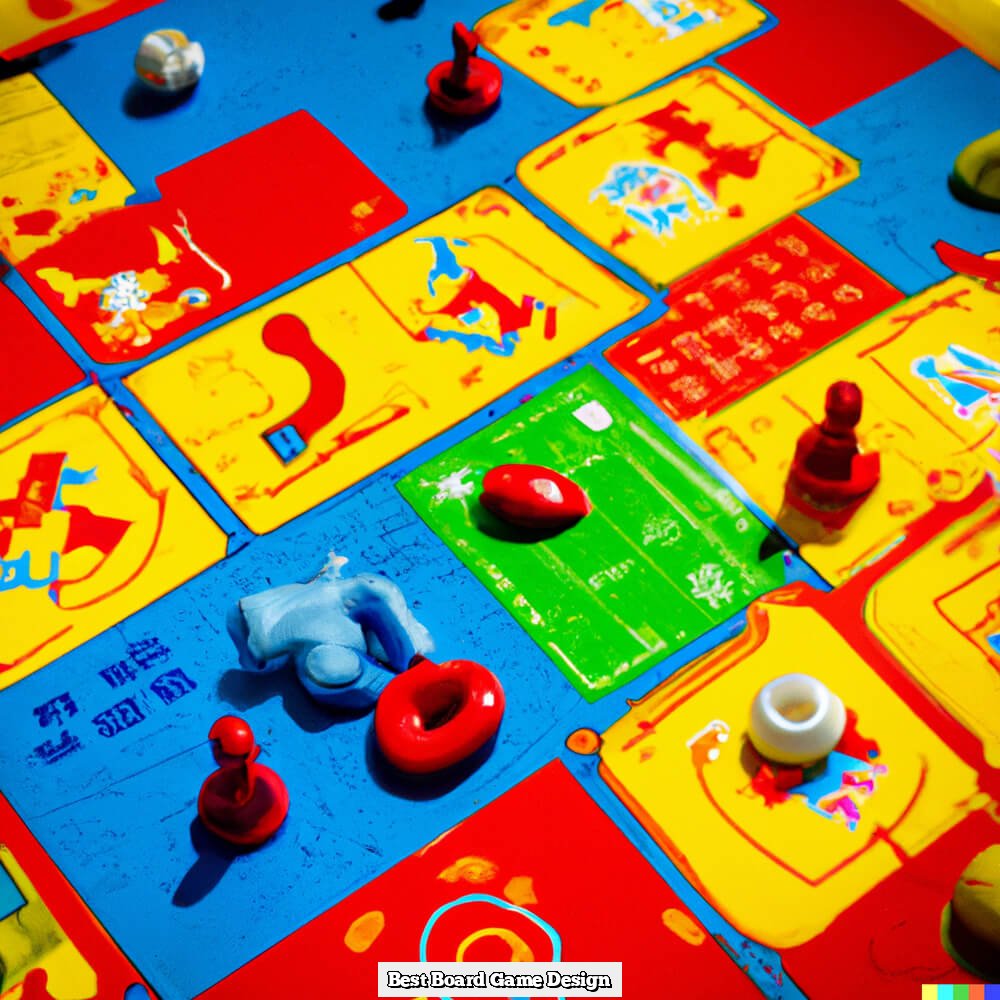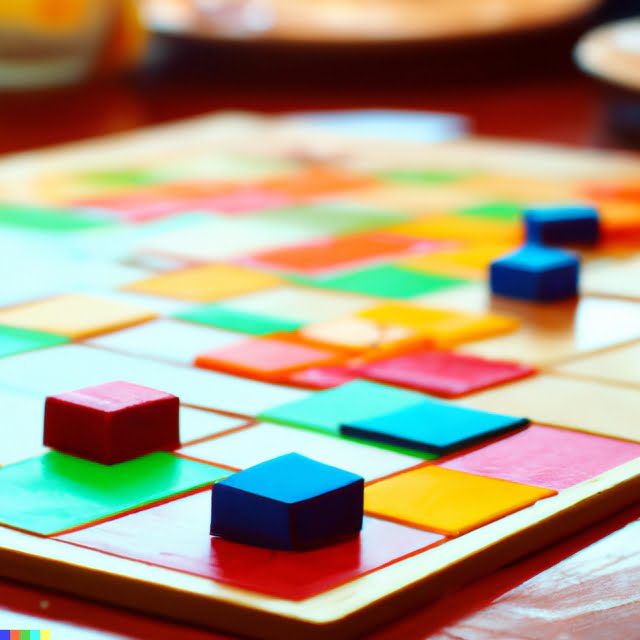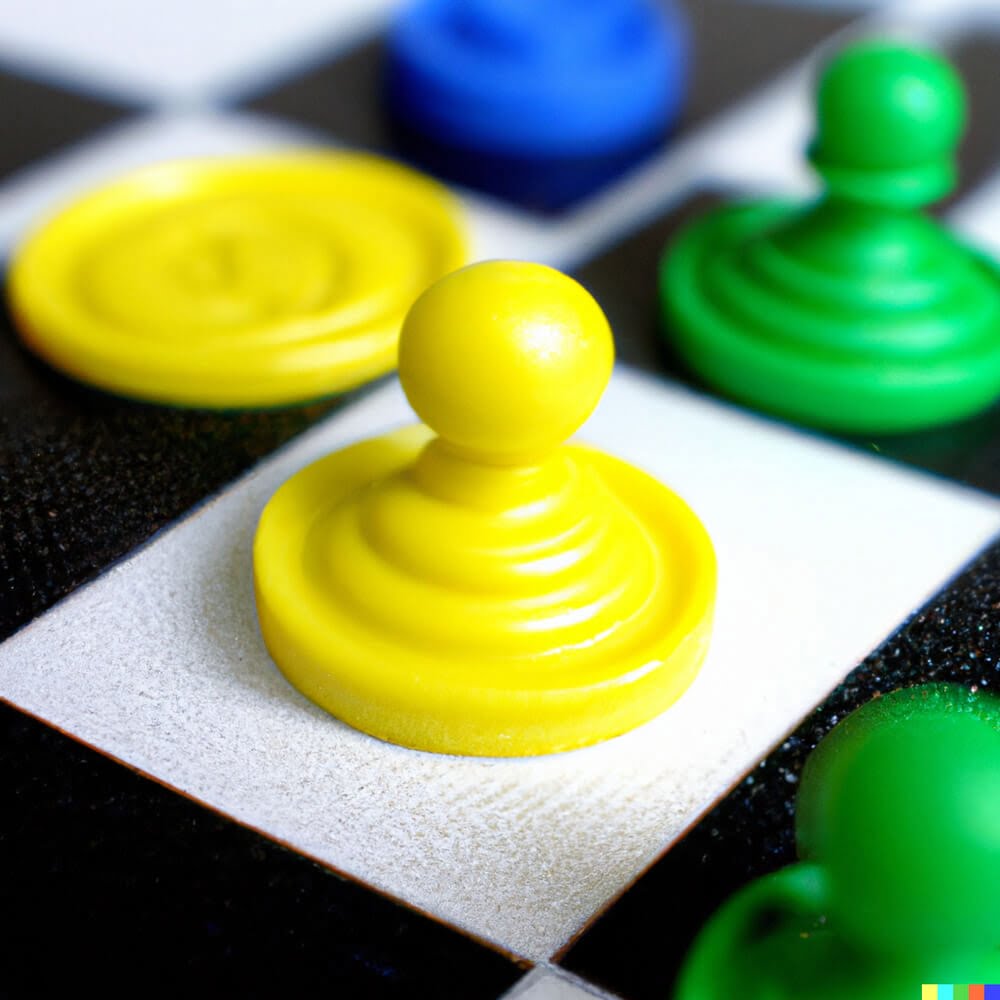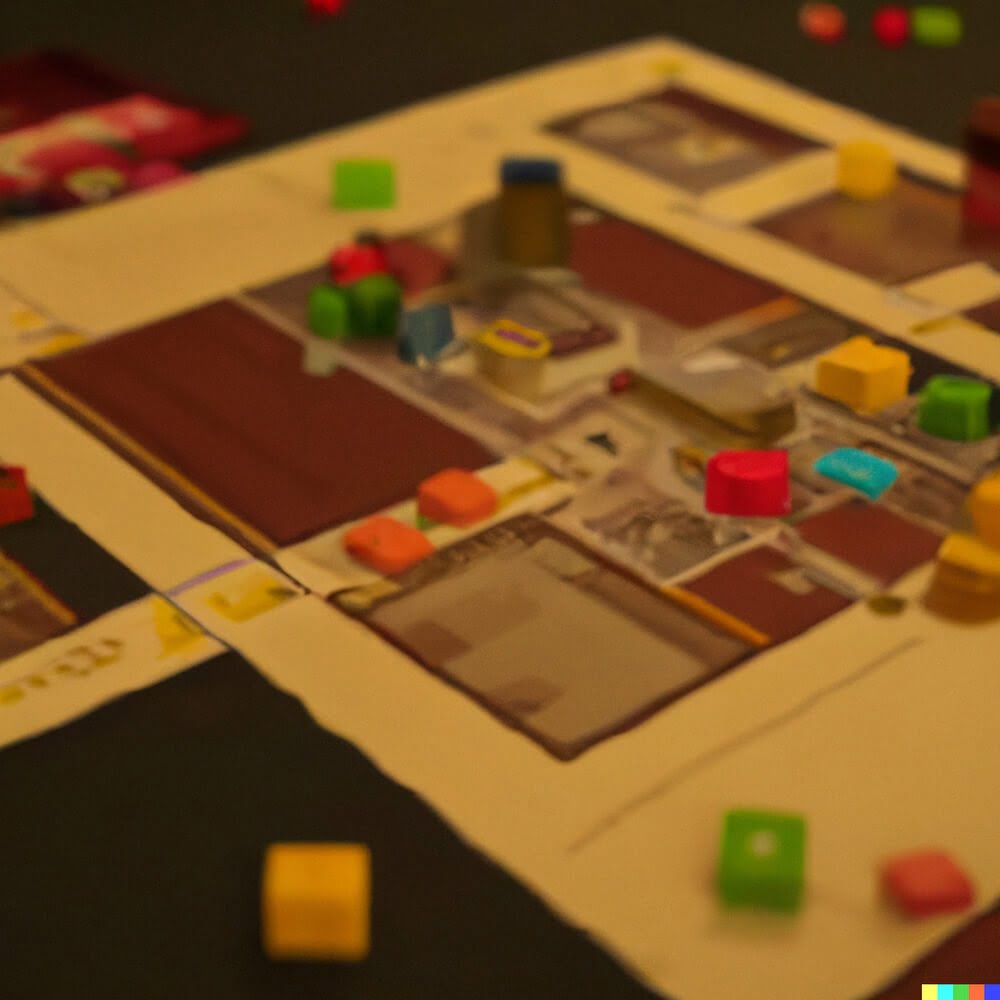Clarifying Components and Materials Needed
Designing your own card or board game is a creative and fun way to express yourself. Before you begin designing, it’s important to assess what components and materials you need to create the game. Writing down a list of items can help you stay organized and focused while working on your game. Generally, most card and board games will require the following:
• A pen and paper: To jot down ideas and draw diagrams
• Sturdy Board: This will depend on how big you want your board to be, but most boards for homemade games are 8×11 or bigger (in inches). Consider using cardboard, foam board, masonite or plywood.
• Tokens or Game Pieces: Depending on your game design, these could range from coins and pieces with numerical values or pawn-like objects that represent the players. If designing a card game, these items will not be needed.
• Deck of Cards: These can be pre-printed playing cards or blank cards that you create for specific parts of the game.
• Dice: Create an interesting component that adds another layer of creativity to your card/board game by including dice rolls, also known as “luck” in some cases.
• Container For Storage: Assemble all elements into a box case so all pieces remain together after use. Choose something sturdy enough that lasts overtime since homemade games tend to be highly valued items!
Choosing a Theme
Choosing a theme for your card or board game is the first step in designing your own game. It is important to pick something that interests you and that you can develop into an engaging experience. When deciding on a specific theme, it is helpful to consider the following:
•What type of gameplay will it have – a strategy game, an adventure game, etc.?
•What sort of setting will you have ” fantasy, science fiction, or real-world?
•Who will be playing the game ” children, adults, or a mixture of both?
Once you have decided on your theme, it is essential to incorporate that theme into all aspects of your design. The mechanics and components of your game should be tailored to fit with the chosen setting and should be designed to help illustrate the world you are trying to create. Consider what types of characters would inhabit this world and think about how their actions can influence the way players interact with different elements in your game. For example, if you choose a fantasy theme then creating suitable objects within its universe (such as magical potions or enchanted items) could affect how players interact with each other during gameplay. Additionally, illustrating your cards or boards with suitable images might help bring depth and life to the premises behind your game.
Plot and Setting
When designing your own card or board game, you’ll want to consider the plot and setting of the game before you begin creating the mechanics. Creating an exciting story for your game will help capture a player’s attention and make them want to play. Consider coming up with a unique concept that could be engaging not just from a gameplay standpoint but also from a narrative perspective. Brainstorm some ideas for worlds, characters, events and obstacles that can be included in your game’s backstory. Ask yourself questions such as “What kind of world does my game take place in?” or “What is the goal of my main character?”. Additionally, think about interesting ways characters can interact with each other in the world you created. Lastly, think about ways to include varying levels of difficulty as players progress through the game. With these steps, you’ll have formed a great foundation for any card or board game!
Building the Player Experience
When designing a card or board game, it is essential to consider the overall player experience. Players should have opportunities for competing against each other as well as being able to strategize and collaborate. The game should also accommodate players of different levels of skill and knowledge, allowing players to feel challenged but not overwhelmed. Finally, the design can seek to raise player interactions, strategizing, and skill development through a variety of methods.
For instance, when building the rules for your game, you can create both positive and negative feedback loops that encourage strategizing. Consider assigning an order of play by creating an initiative mechanic or special abilities that will influence the timing of each player’s turn and potentially give certain players the chance to engage more strategically than others. Additionally, introduce components within the game such as branching pathways that involve making choices among multiple courses of action with varying risks and rewards that connect different locations on the board and generate a sense of dynamism as results materialize over time. These features can help keep players engaged through increased decision-making, as well as providing opportunities for strategic experimentation.
Furthermore, tailor elements in your game according to player skill levels by introducing objectives or actions relative to their particular level of expertise. Keeping elements modular is another great way to make a game more accessible”for example, increasing or diminishing difficulty settings or changing cards decks will allow individual players or groups to choose levels that fit their needs; plus it adds replayablity value!
Ultimately, designing your own card/board game is all about how you shape player experiences by developing each element with deliberate thoughtfulness; no matter how complex a system you may want to build out at first pass, always remember there should be fun held at its core!
Crafting the Rules
Designing one’s own card or board game can be a fun and creative outlet for those who are interested in game development. To get started, it is essential to define the winning conditions, limitations and performance targets of the game. The winning conditions provide clarity on how the game will be concluded, such as by reaching a certain score or eliminating competitors. Limitations should establish parameters within the game such as maximum number of moves allowed and when certain cards or pieces are not in play. Finally, performance targets outline what players should aim to accomplish during their turn and can help guide each individual’s progress towards victory. With these guidelines in place, a fascinating world of new ideas awaits!
Visualizing Ideas for the Design
Designing your own card or board game is an exciting project! It’s a great way to express your creativity and make something unique that you can share with others. Before you begin, it’s important to think through all the details of the game. For example, consider the type of game you want to create – will it be cooperative, competitive, or solo? How many players will there be? What are the objectives?
Once you have a clear idea of your game concept, the next step is to translate those ideas into visuals and bring the game to life. To do this most effectively, you’ll need professional drawing techniques and creative inspiration. Here are some ideas on how to design an appealing card and/or board game:
– Use color theory concepts like contrast, balance and harmony when choosing artwork for each card or space on the board. This can help them work together in a visually pleasing way.
– Incorporate interesting visual elements like abstract shapes and images which reflect the theme of your game.
– Make sure all illustrations are custom made so they fit perfectly with your theme and style.
– Choose interesting fonts which convey different emotions depending on the type of cards – funny fonts for lighter games while more dramatic fonts work better for serious ones.
– Utilize textures in artwork (such as fur or fabric) to add depth and realism.
– Try using white space strategically throughout designs in order to emphasize certain elements without making everything look cluttered or overwhelming. All these can help create a powerful visual experience when playing your custom card or board game!
Authoring the Manual
Writing a clearly outlined and easy-to-understand how-to manual is essential for any card or board game. A good manual should include specific rules and instructions which use concise, clear language. It should address all information a player needs to understand in order to be able to play the game properly.
When creating a manual, it is important to consider what age group the game is meant for and tailor the language accordingly. This can make rules easier to follow and remember by young players. It’s also helpful to provide clear examples so that players can gain a better understanding of how to play the game without having demonstrated it to them beforehand. Additionally, it’s important that the mechanics of each turn are explained in a logical fashion and instructions are organized into steps so that players can easily locate what they need.
The manual should also include an overview of key aspects such as the equipment needed, number of players required, strategies for success, special terms used within the game, variations on gameplay and additional ways of engaging with it over time – these can all help create an enjoyable playing experience for multiple playthroughs. Finally, add illustrations wherever appropriate – it not only adds interest but provides visual cues which further aid comprehension. Together these elements should create an effective guidebook at the heart of your card or board game design.
Developing Strategies & Tactics
When designing your own card or board game, it is important to keep in mind the concept of game theory. Game theory is the mathematical study of strategic decision-making and can be applied to developing strategies and tactics when designing a card or board game. The goal of game theory is both simplifying decision making while also helping players make more informed decisions. For example, players must evaluate the risks and expected benefits that could arise from taking a certain action with their cards or pieces. In terms of strategy design, players should consider how their moves will benefit them as compared to competitors’ moves. A game designer can analyze these effects by determining which strategies are the most advantageous for each player based on the current state of play. Additionally, there should be an emphasis on creating pathways to success for all players instead of just one faction dominating the other. Additionally, creating tipping points during a game can also help add tension during gameplay that makes it more exciting for all parties involved/potential future players/etc. Board games and card games were specifically designed for group play and connecting people together to create enjoyable experiences; ensure that your design adds value to each player regardless of their skill level rather than only rewarding experts or having luck decide the ultimate victor.
Testing for Quality & Bugs
Creating a quality card or board game is a process that demands attention to detail and should not be taken lightly. Quality testing of the materials and performance of the game is essential to its success. You need to be sure that your game components will stand up to repeated use without tearing, dipping, or warping. You will also want to test the gameplay itself for any bugs or issues that may occur when playing it. This can include checking for any imbalance in rules, mechanics, and scoring, as well as making sure there is nothing missing from the instructions, such as vital components or clarifying rules. Additionally, it is important to test how easy it is for players to understand how the game works after reading the instructions ” make sure that all necessary elements are explained clearly in language that is simple enough for anyone unfamiliar with your game’s mechanics to understand fully. Finally, you should try out different rounds of play-testing your product with friends and family before releasing it into the world by gathering feedback on their experiences and using their perspective on what could be improved upon. Investing time in each step of quality control can ultimately result in a successful and profitable product release!
Protecting Intellectual Property
Designing and creating your own card or board game is an incredibly rewarding experience for all involved. However, before it can be officially released, it is important to protect your intellectual property and be prepared for any legal checks that may come along with submitting your game to online distributors. The following steps will help ensure a smooth process:
1. File a provisional patent application: Filing a provisional patent application is an important step towards protecting the originality of your game. This will allow you to publicly announce the game without fear of plagiarism while also giving you 12 months to better refine your intellectual property rights.
2. Consult a professional lawyer: It is highly recommended that you consult with a professional lawyer who specializes in trademark, copyright, or patenting laws prior to submitting your game to online distributors. A lawyer can help ensure that you are taking all necessary precautions in order to successfully protect and monetize the idea behind the card or board game that you have designed.
3. Research distributor guidelines: Before submitting for distribution, it is important to research distributor guidelines so you know what’s needed from you by their legal teams in order for them to accept and cover any potential liabilities associated with distributing the game itself. Once this has been completed, prove ownership by including artwork registration dates, manufacturer declarations and other relevant official documents establishing authorship of the game’s content which should support both physical designs and digital versions if applicable.
4. Register trademarks: If available, registering for trademarks will prove much easier than filing patents as they can easily accommodate slight adjustments regarding product name and logo over time especially when applied worldwide (which we recommend where possible). Trademarks are vital when mass-producing anything related to selling items such as t-shirts, mugs or any materials related directly to the specific card/board game under production ” an essential part of commercial considerations long-term income streams should understanding publisher fees upfront as well!

I love playing all kinds of games – from classics like Monopoly to modern favourites like Ticket to Ride.
I created this blog as a way to share my love of board games with others, and provide information on the latest releases and news in the industry.





